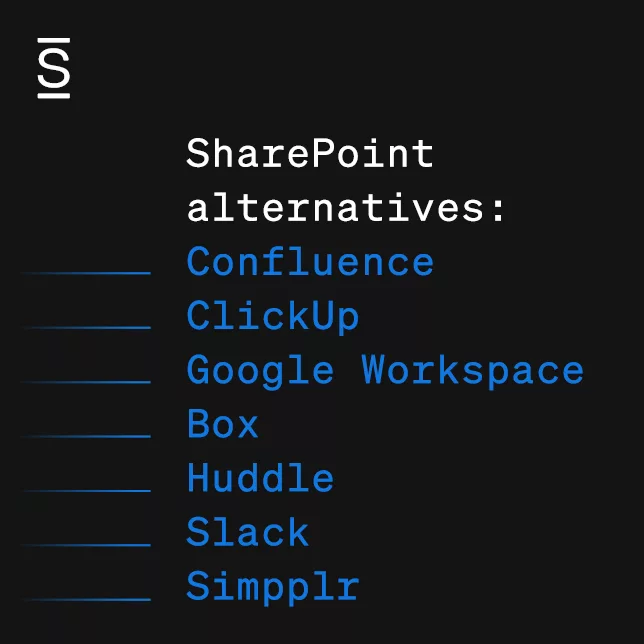What is Sharepoint?
Often times, we hear ‘Sharepoint this’ ‘Sharepoint that’ but don’t know what actual Sharepoint is. For those that are unfamiliar, Sharepoint is a website-based collaboration system that integrates with Microsoft Office. According to a recent Simpplr Research survey, nearly half of all intranets run on SharePoint.
Sharepoint is often managed by the IT department and requires extensive configuration with technical resources to get it up, running and maintained. The platform often needs to be maintained by technical resources who have been certified in SharePoint-specific configuration. This creates maintenance complexity, makes the intranet’s total cost of ownership (TCO) skyrocket because you have to staff expensive technical resources, and often slowing the business down because it forces IT to be part of workflows.
Why do organizations use Sharepoint?
Sharepoint is a central location: The platform promotes a product in a larger ecosystem to house all documents, create a feed, and encourages company-wide announcements so staff can find everything in one location.
Sharepoint is accessible: Companies with an in-office workforce tend to have a subscription for Microsoft Office 365 which gives access to Sharepoint. Since the product is ‘free’ – companies tend to overlook the hidden costs of customization, design and implementation.
Sharepoint is marketed as an intranet: Bundled together with features such as content management, social networking and document management, the platform is billed as a team collaboration software. What is often forgotten is that Sharepoint isn’t optimized for usability, design and often requires the assistance of IT departments to set up and maintain.
Reasons to consider a Sharepoint alternative
Sharepoint has been the default ‘go-to’ platform to build a company intranet on due to it being a Microsoft office product. Often during implementation, organizations learn that its capabilities are not a fit for a modern, social intranet and thus seek out alternative solutions. Companies that build their intranets on modern intranets have employees that are more engaged, connected and aligned with company goals.
Related: Best SharePoint Alternatives
What are the Sharepoint Intranet alternatives?
There is a lot of choice when it comes to choosing an intranet provider and your organization has varying needs so it’s important to weigh the pros and cons when in the research phase. Without a purpose, your intranet will fail regardless of the technology so there must be some features that are integral to your platform.
- User Experience: Employees and managers expect their intranet to save time, and any platform that requires complicated training is unlikely to see much use.
- Search: The ability to find what you need quickly is at the core of any intranet platform. Making sure that your platform can search across all data including text, tags, pages, and media files is important for users to find relevant information.
- Analytics: In order to understand and improve the performance of your intranet, you must be able to take a look at analytics to understand user adoption and consumption.
- Content Governance Capabilities: Your intranet platform must be kept up-to-date and contain relevant information for your workforce. There have to be built-in capabilities that help intranet managers manage stale content.
- Integration: The goal of a comprehensive intranet is to bring all information, communication and company systems together in one location.
Check out the step-by-step guide for selecting the best modern employee intranet solution for your organization.
What to ask when looking for a new intranet?
It’s important to evaluate the needs for your organization and see what solution works for your workforce. Before you select an intranet provider, assess these questions to find what you’re looking for:
- What is the objective of the intranet?
- Who will be the content owner and manager of the intranet?
- How much time and money do you have to maintain the intranet as an employee resource?
- What are the costs after initial intranet implementation?
- What integration capabilities are there?
While Sharepoint has been a solution since the early 2000’s, it has not been a viable intranet solution in recent times. Once organizations can determine what pain points they are solving for, they can determine what solution fits their intranet needs.

















